Day 2 of a three day Summer Tour. Less rain forecast today – more thundery showers – but the problem in the forecast was the wind, which was predicted to be gusting up to 50+mph. Thankfully, once again, even though it was very windy it wasn’t as bad as we thought it might be and we managed to make the most of the day.
As the wind hadn’t yet picked up, we stopped at Wells first and had a quick look on the pools there. They looked quiet when we arrived, but we set up the scopes and started to scan. Five Spoonbills were asleep on the island on the back of the pool east of the track. There were several Ruff and Black-tailed Godwits roosting here too, and a couple of Ruff closer to us, on the mud nearer the track. Three Green Sandpipers were feeding on the mud behind the islands – they kept disappearing from view, but eventually everyone got to see them.
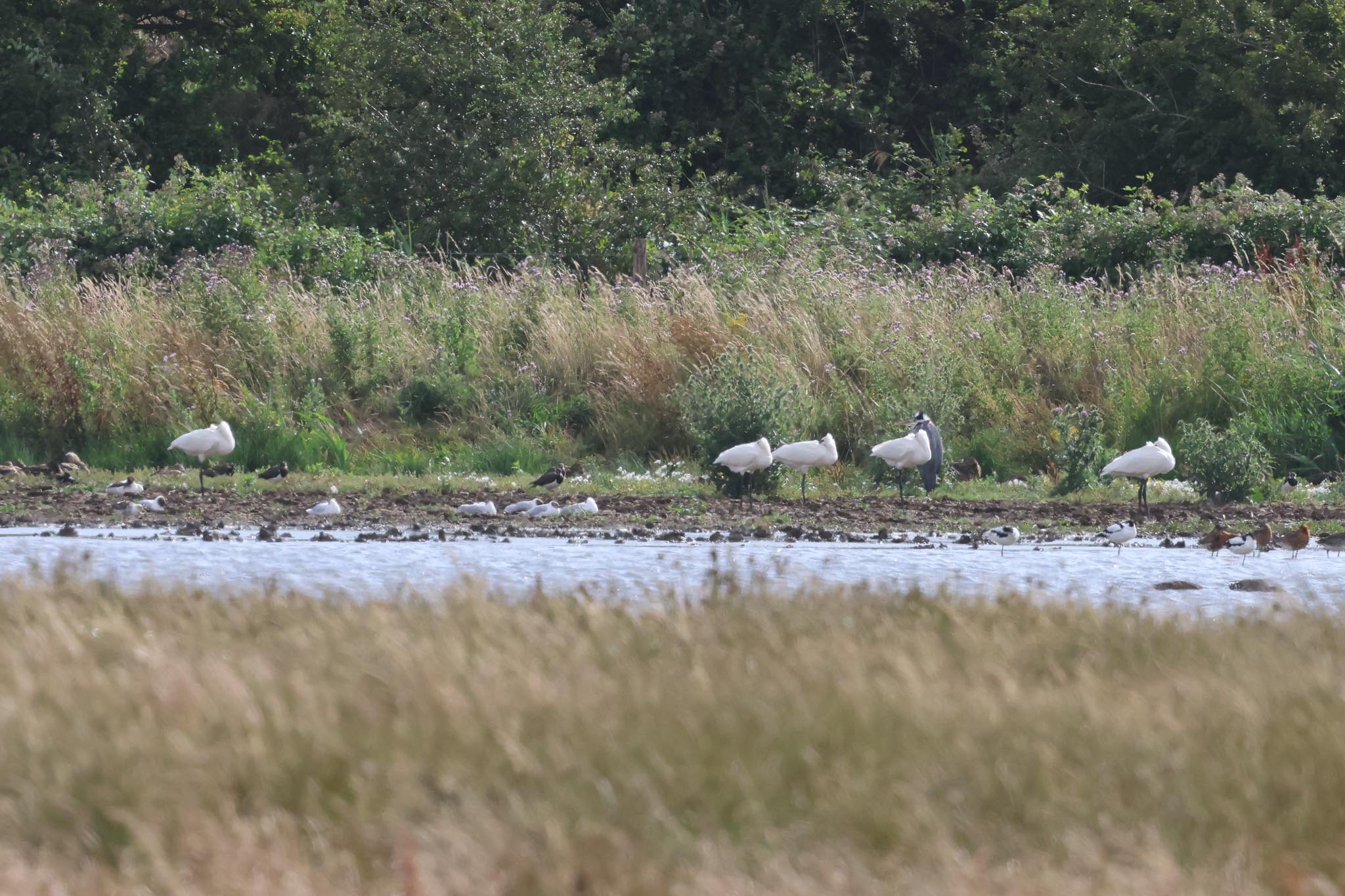
Lots of gulls drop in here to drink and bathe from the nearby pig fields. They were mostly Lesser Black-backed Gulls and Black-headed Gulls, with a smaller number of Herring Gulls in with them. Looking through, we picked out a slightly larger gull, still immature, a fourth calendar year, with a beady dark eye and darker mantle. It was an immature Caspian Gull, a nice bonus.
Moving on, we drove west. We were heading for Titchwell, where we would have the benefit of hides to get out of the wind. We checked out the harbour at Burnham Overy on our way past, but there were no terns in the channel today. As we drove through Brancaster Staithe, a Sparrowhawk flew off over the houses ahead of us, carrying something in its talons.
As we arrived in the car park at Titchwell, a Song Thrush was feeding on the grassy verge by the toilet block and another was singing from the trees nearby. The sallows were rather quiet as we walked along the path to the Visitor Centre and the bird tables beyond had just a couple of Woodpigeons, plus a Moorhen on the pond, so we headed straight out along the main path. Stopping to scan the Thornham grazing meadow, a female Marsh Harrier flew past along the near edge of the grass.

Out from the trees, and a Sedge Warbler was singing and songflighting up from the reeds on the Thornham side of the path. A couple of Reed Warblers were singing their more metronomic song the other side, with several flitting in and out of the reeds around the borrow pits. A Common Tern was hovering over one of the pools in the reedbed beyond and a Gadwall was in the channel. Two Little Grebes were over towards the back of the larger reedbed pool, where small rafts of Shoveler and Teal sailed out from behind the reeds too.
Just before Island Hide, we stopped when we heard Bearded Tits calling, and had a glimpse of one dropping down to the base of the reeds below the path, out of view. There were several Ruff, of various colours and various different stages of moult, on the mud just beyond the reeds and a smart Icelandic Black-tailed Godwit in rich rusty breeding plumage with them. Further back, we could just make out two Spotted Redshanks with the Common Redshanks on the far compartment. An adult and juvenile Mediterranean Gull were loafing around the bricks, with the Black-headed Gulls and a family of Common Terns.
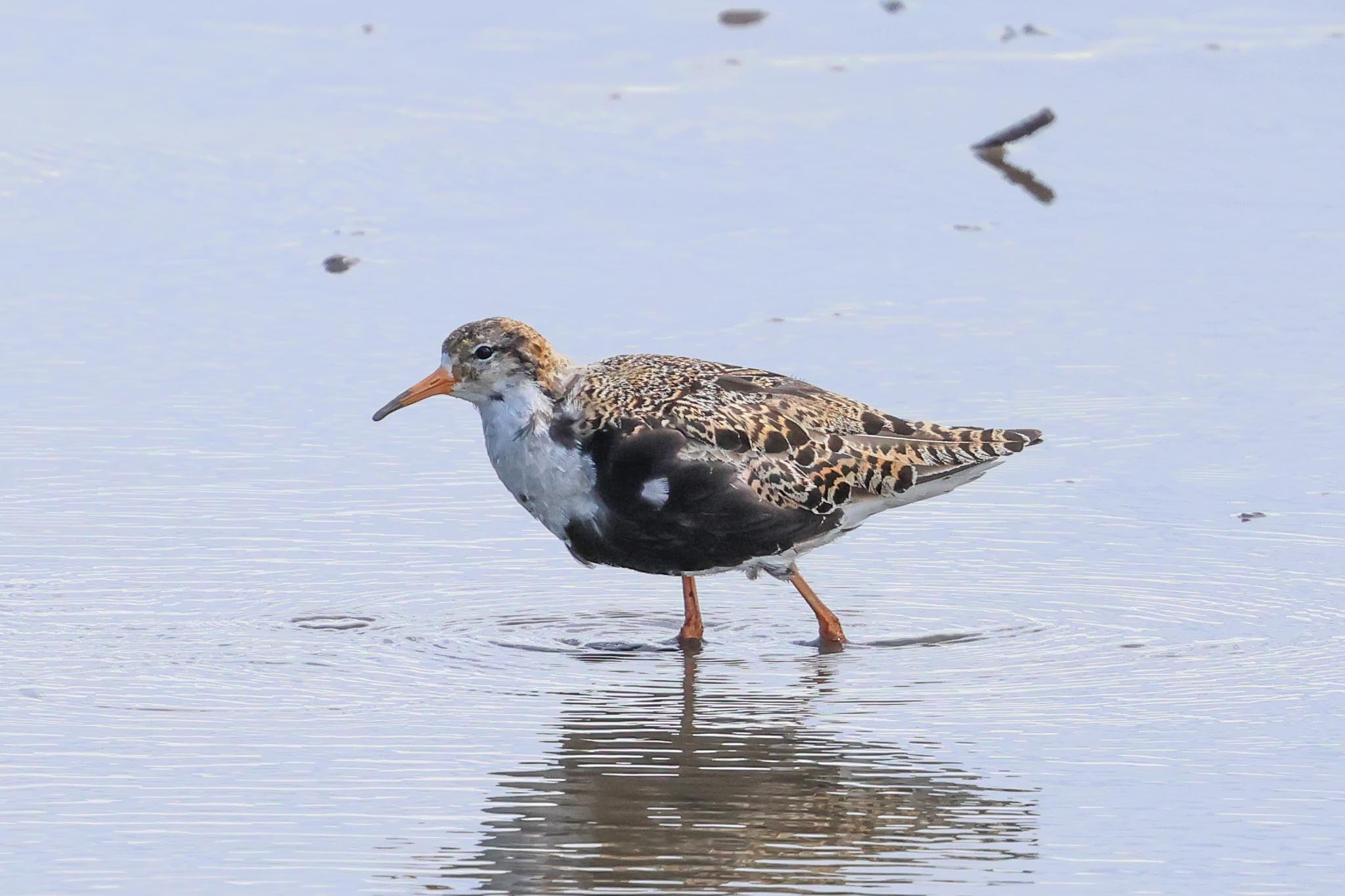
We went into Island Hide, to see if we could spot any Bearded Tits from there, along the edge of the reeds. Two close Icelandic Black-tailed Godwits were feeding right outside the hide, along with a couple of Avocets, giving nice close views. A single Little Ringed Plover was on the bank to the left of the hide, so we could see its golden eye ring in the scope. A couple of closer Common Terns were on the near island, where we could get a good look at the length of their tail streamers.

Scanning along the base of the reeds to the right of the hide, we eventually picked up two juvenile Bearded Tits working their way along the edge of the water. We had some lovely views of them in the scope.
Back out onto the main path, and we could see dark clouds approaching from the south west now, so we headed straight on round to Parrinder Hide. We had slightly closer views of the Spotted Redshanks from here, along with a Continental Black-tailed Godwit, of the nominate limosa subspecies, sporting colour rings which showed it had come from the Ouse Washes and a single Dunlin.

Then the rain swept in and for a few minutes it was very heavy. We watched the birds standing with their bills pointing upwards, allowing the water to run off. An even closer Spotted Redshank appeared briefly on the island with the Continental Black-tailed Godwit, and we could see its very thin, needle fine bill tip. The rain quickly cleared through on the brisk winds and blue skies returned. A Ringed Plover appeared on the grassy island in front of the left part of the hide and several Mediterranean Gulls landed in front of the other side of hide to preen and dry out with the Black-headed Gulls.
With the sun back out, we decided to walk out and have a look at the beach. It was windy, but not as bad yet as the 50+mph gusts which were forecast, and we found a little bit of shelter in the lee of dunes. There were a few waders on the mussel beds, including a nice Bar-tailed Godwit next to a Black-tailed Godwit for comparison. A Common Seal was hauled out on the beach just beyond, with several Grey Seals in the water just offshore. We could see lots of Sandwich Terns flying past over the sea, along with a few more distant Gannets.
We made our way back for lunch, and it was sheltered on the picnic tables in the trees by the Visitor Centre. After lunch, we drove round to Snettisham and out to the hides, where we figured we could still do some birding out of the wind, which was starting to pick up more now. It was not a big tide today, and not high tide until 6pm, so there was still lots of mud out on the Wash when we arrived. Several Oystercatchers were sheltering behind the vegetation on the seawall.
We stopped in at Rotary Hide first – we planned to work round from shelter to shelter. Flocks of Black-tailed Godwits and Redshank were constantly flying in over the pit, a good early sign, suggesting there would be some birds on the pits despite the current stage of the tide. A Common Sandpiper was feeding along the back edge opposite. Lots of Common Terns were nesting on the near island and flew up calling as a Great Black-backed Gull flew over. A couple of Sandwich Terns flew in over the pit too.
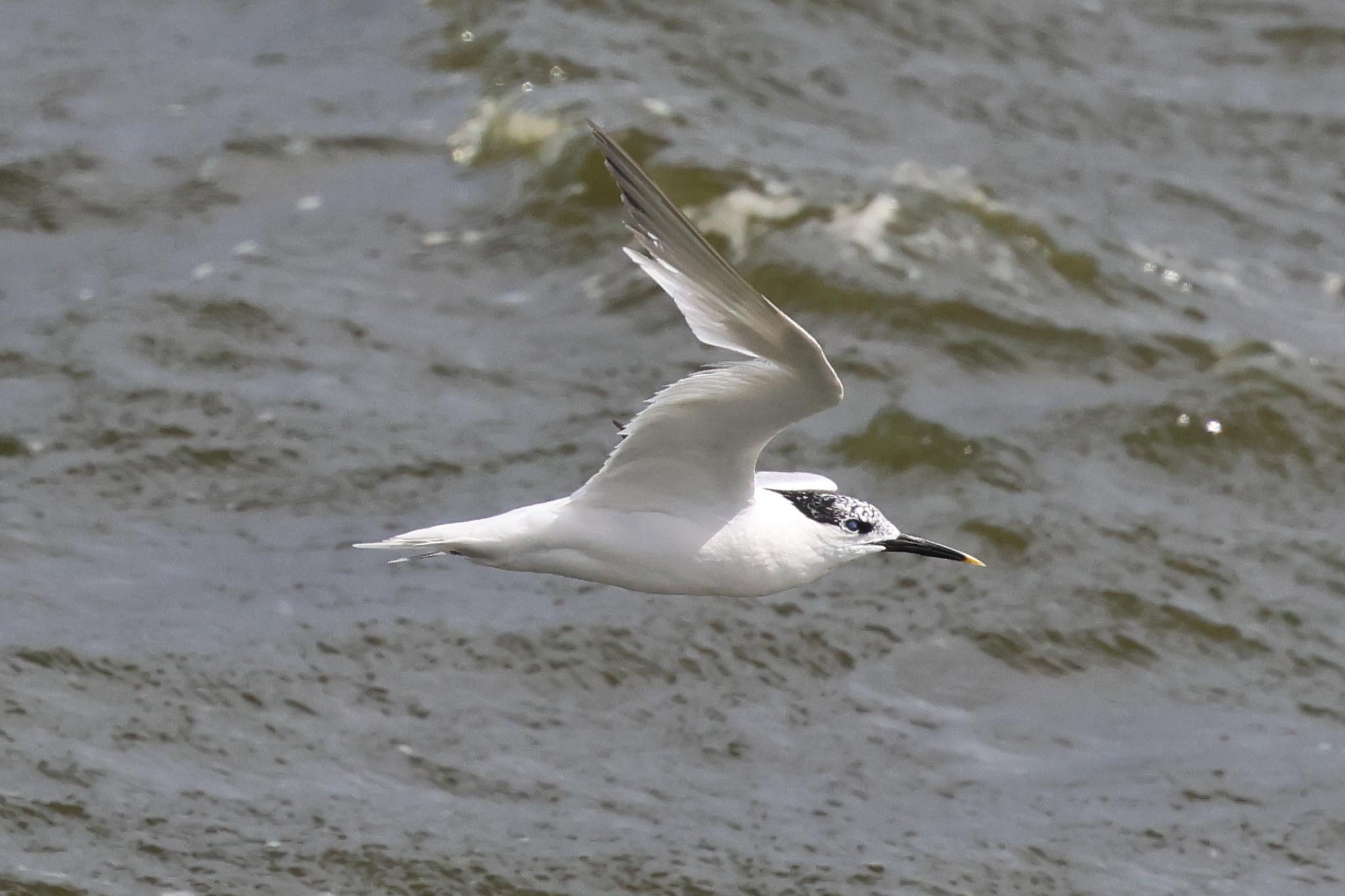
Moving on down to Shore Hide, there were Linnets and Pied Wagtails in the grass on the seawall. From the hide, we could see five Spotted Redshanks in between the rocks in the middle of the water, patchy black and white now as they moult into non-breeding plumage. There were several Spoonbills here, but they were hiding out of view in a dip on the top of the bank opposite, presumably sheltered from the wind. A scalloped juvenile Mediterranean Gull was begging to be fed by its parent on the island below the hide.
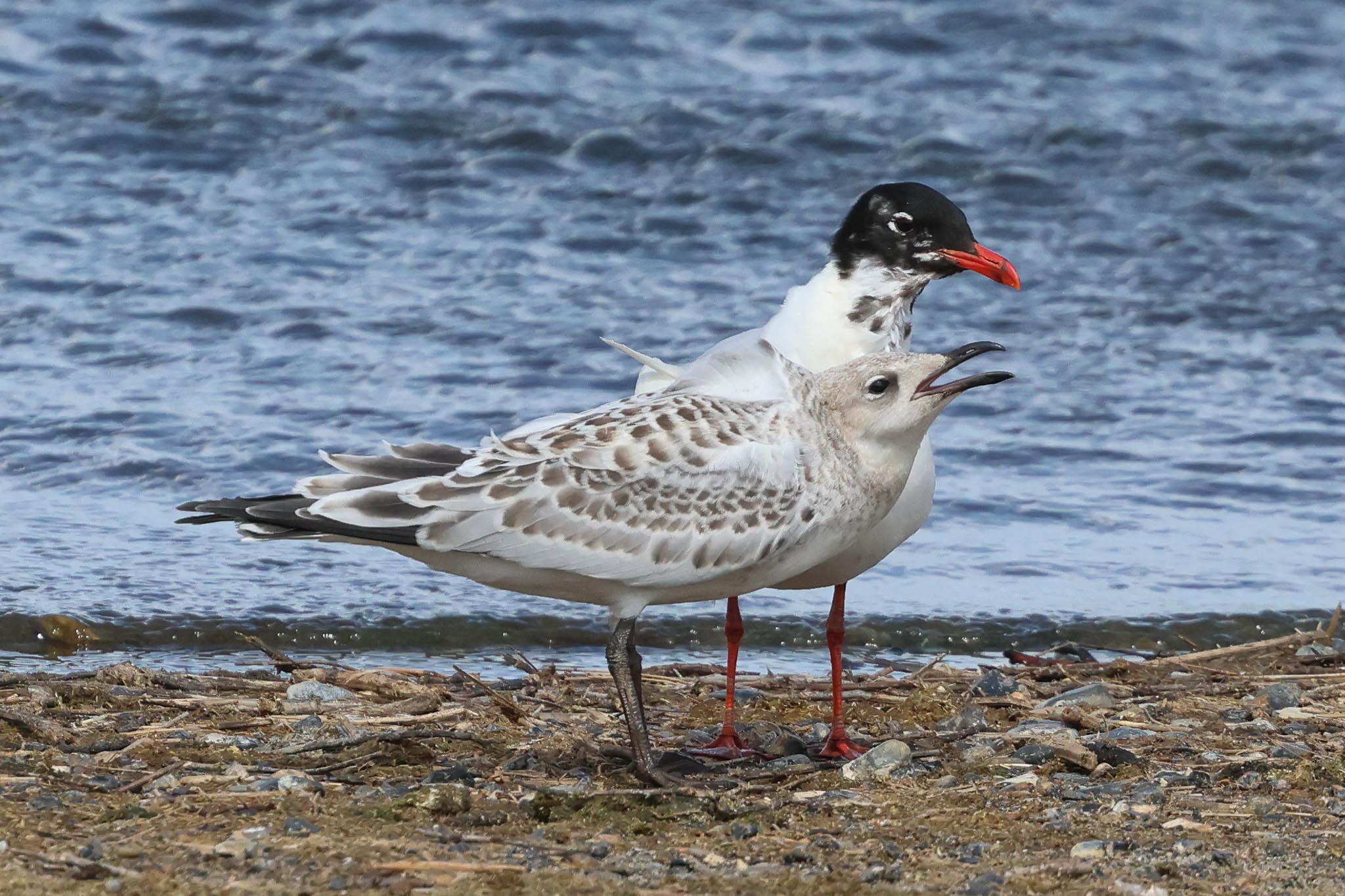
More waders were starting to gather on the edge of the island by the bank to the north of the hide. We could see several Knot here, mostly still in rusty orange breeding plumage, along with a few Dunlin still sporting their summer black bellies, all in among the legs of the larger godwits – mostly Black-tailed Godwits but with a few Bar-tailed Godwits in with them. There were more Redshanks on the tip of the island and another Spotted Redshank in with them. More waders were arriving all the time, a particularly big flock of Black-tailed Godwits flew past at one point, all dropping down to land around the southern end of Pit.
We pressed on further, down to South Screen to check out the waders at that end of the pit, and it was very blustery now. Nine feral Barnacle Geese were in with the Greylags on the grass as we passed. From the Screen, we noticed a White-fronted Goose swimming with the Greylags on the Pit, presumably another feral bird as the wild birds would be in Russia at this time of year.
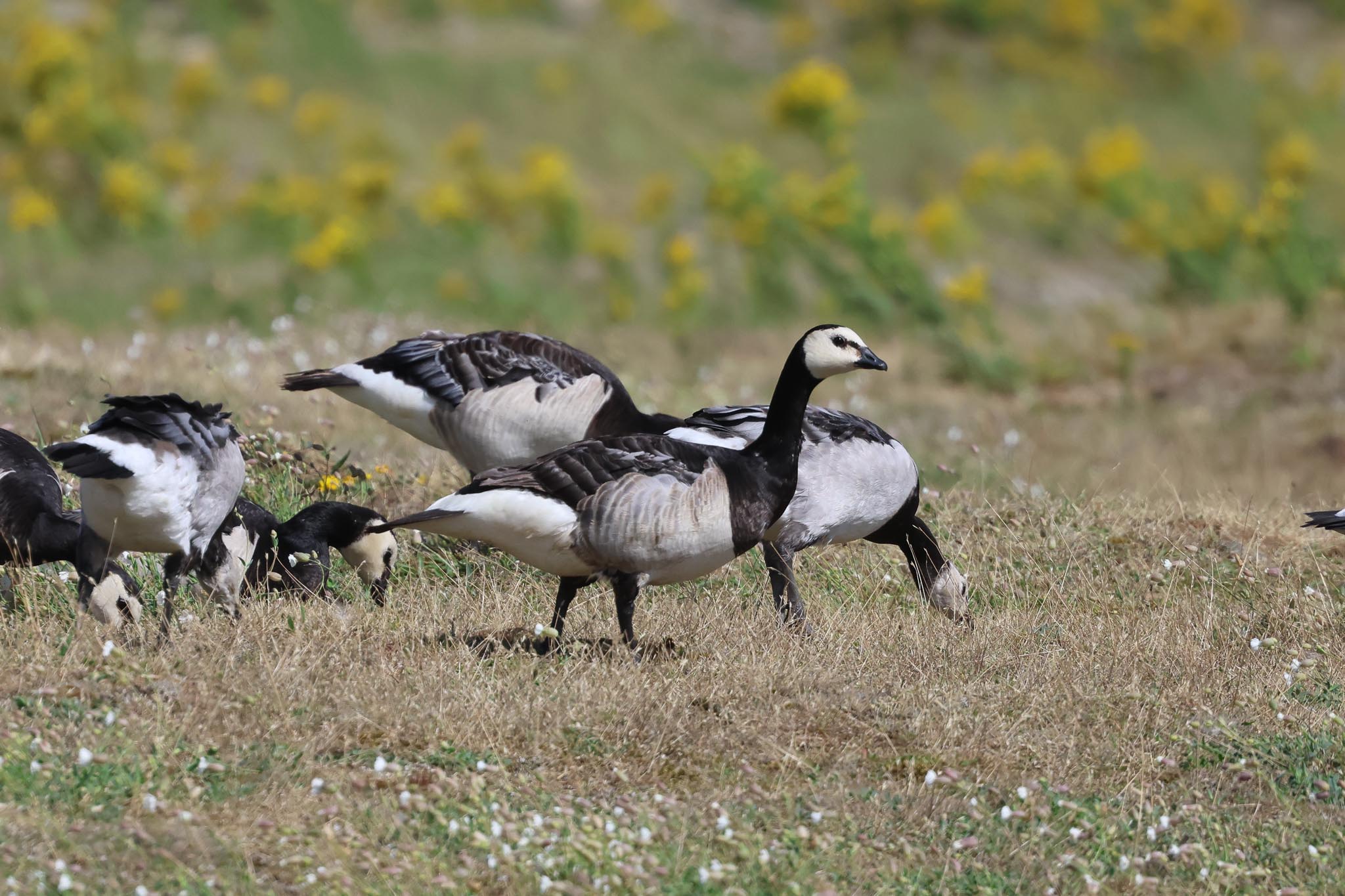
We scanned through the gathering of waders on the bank, lots of Black-tailed Godwits in particular, along with smaller numbers of Knot and Dunlin, a very impressive sight but we couldn’t see anything different in with them. We were watching carefully as more dark clouds approached over the Wash and at first they looked to be missing us, the skies going increasingly black off to the north, but when it looked like we might catch the edge of the rain, we decided to head round to the big hide where we would be more sheltered.

When we got in the hide, one of the group spotted a Little Stint which dropped in on the island right in front, stopping to bathe and preen in the edge of the water, tiny next to the godwits. A Whimbrel appeared on the front edge too and we had great views of the godwits and Knot. Then the rain arrived, and for a short while it was very heavy, whipped across in the blustery winds.
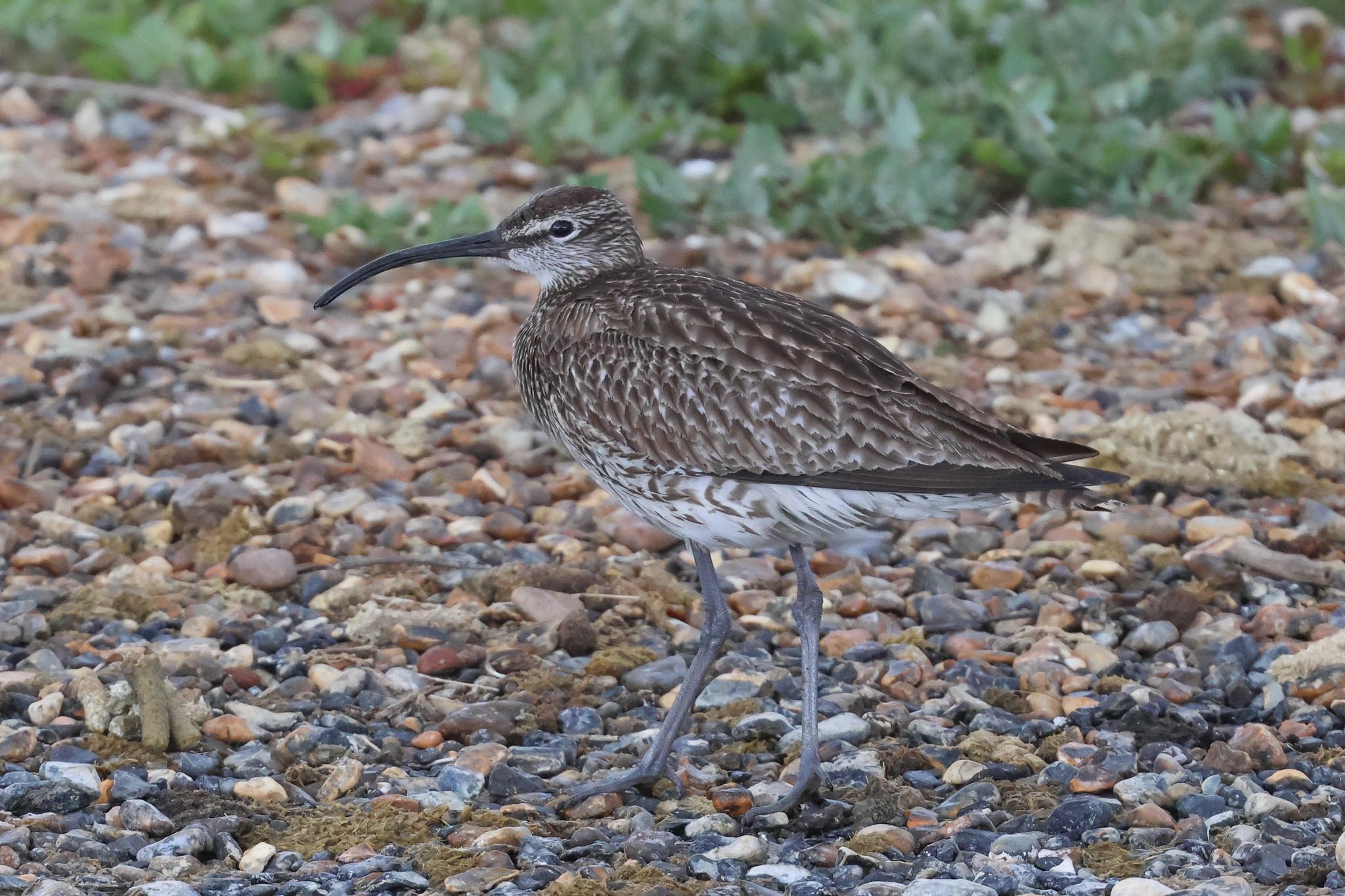
The rain cleared through quickly on the wind, but it was still spitting for a bit, so we waited in the hide until it stopped. Most of the smaller waders had disappeared, but the Spoonbills now flew out and landed on the islands right in front of the hide to preen and dry out. We counted twenty eight, including eleven juveniles with short ‘teaspoon’ bills.
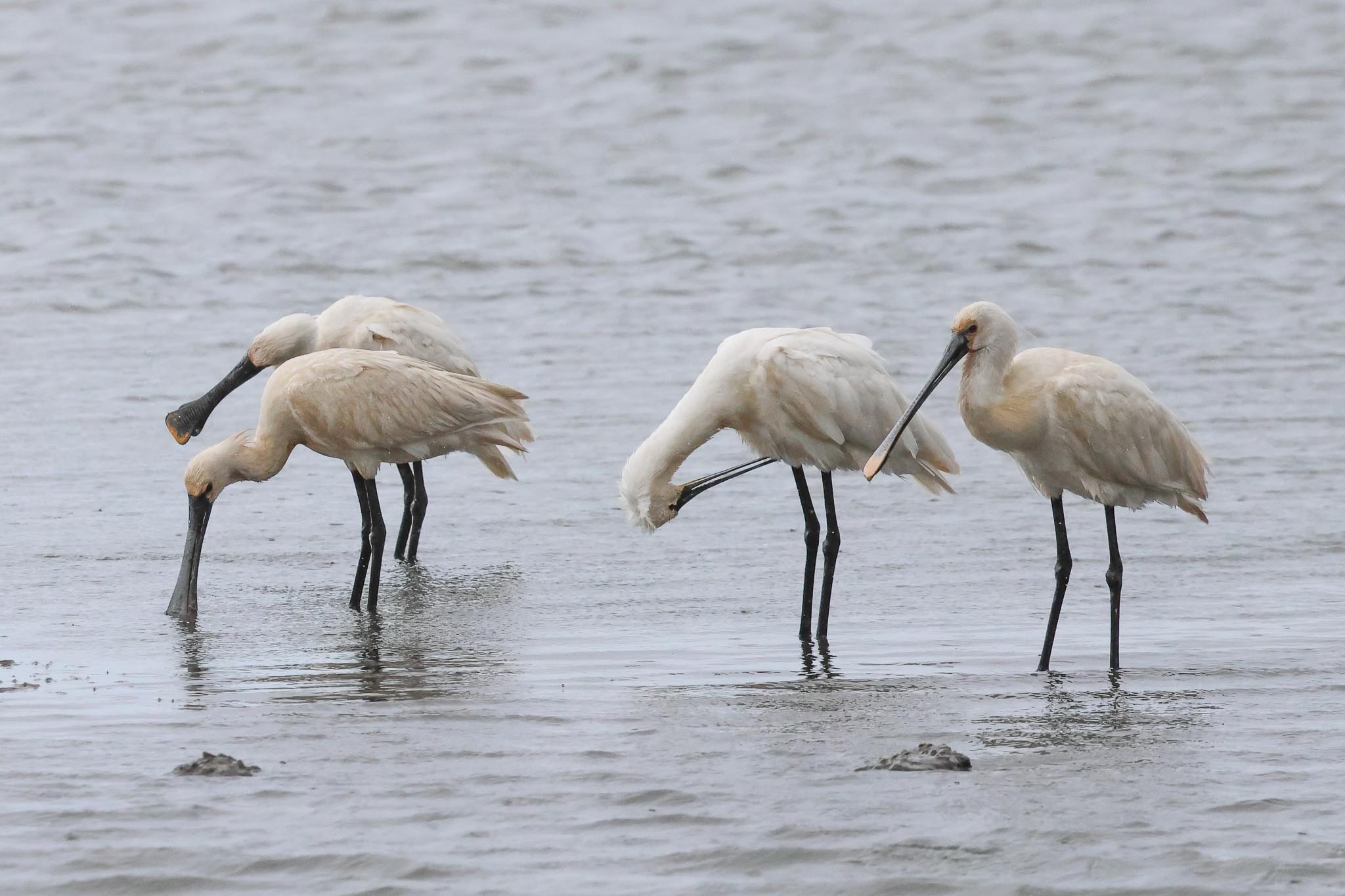
Two Little Terns flew in and round over the water, but didn’t land. There had been no sign of any Sandwich Terns before the rain, presumably they had all been out on the mud, but now they came in, and a good-sized flock gathered on the shingle island opposite.
When the rain stopped, we made our way back. It was probably too windy for the Turtle Doves to be feeding along the seawall today, and there were none on the wires by the Coastal Park either as we passed, but as we drove out of the village, two Turtle Doves flew over the road ahead of us, and off over the fields to the south.
Nightjar Evening
The weather was far from ideal for seeing Nightjars this weekend, but tonight seemed to represent our best chance. At least it was dry, but we had never tried to see them in gusts up to 40mph before! We met again just before sunset and drove over to one of the local heaths. As we walked out, the trees were thrashing around in the wind. A family of Stonechats appeared briefly in the gorse by the path, but were keeping down out of the wind tonight.
We stopped in the middle of one of the Nightjar territories and waited. It didn’t feel very encouraging, but on cue about twenty minutes after sunset we heard one call and had a glimpse of it as it flew through the edge of the trees. It went quiet and for a minute we thought that might be it, then the male Nightjar started churring on the edge of the trees briefly. It flew out and round in front of the trees, before landing on a dead branch which it often uses. We got the scope on it, but unfortunately, it didn’t stay long and only a couple of members of the group managed to see it through the scope.
The Nightjar flew out into the middle of the heath, where it churred again from the ground, a bit half-heartedly. There is a small path out in that direction, so we set off to walk out to see if we could find it. Before we had got very far, it flew back back in and started churring more strongly now in a big oak right next to the main path. We stopped to listen to it. It took off again and became more active, flying back and forth past us several times, at one point coming right over our heads, and then joined by a second Nightjar, lovely close flight views.
We would happily have settled for what we had already seen and heard, given the weather, so when it seemed to go quiet again, we started to walk slowly back. We hadn’t gone far when we heard another Nightjar call and another male flew in and hovered right above us for several seconds, flashing the white in its wings and tail. Amazing! It flew round, then came back to check us out a second time. As we continued on, in the gathering gloom now, we stopped to listen to yet another different male churring on the edge of the trees.
The evening had already significantly exceeded all expectations, given the strength of the wind. Then, as we drove back, we noticed a Tawny Owl perched on a sign by the road. We pulled up slowly where it was illuminated in the headlights, and it stayed there staring at us for a while before it eventually flew up into a nearby tree. A great way to end the day.
















